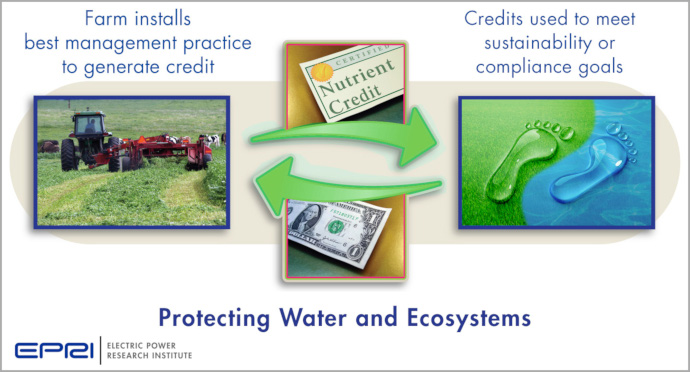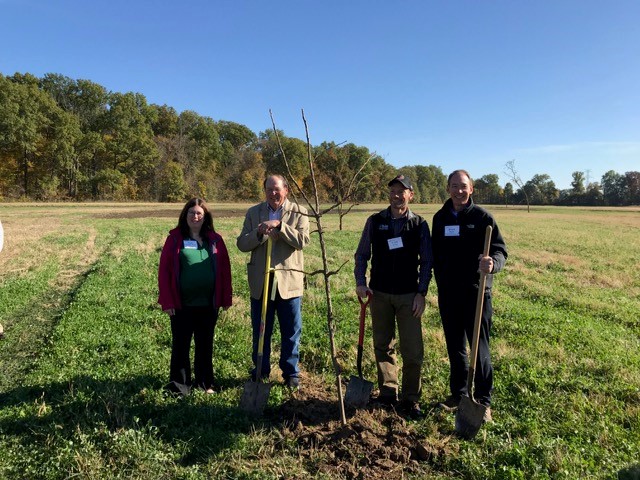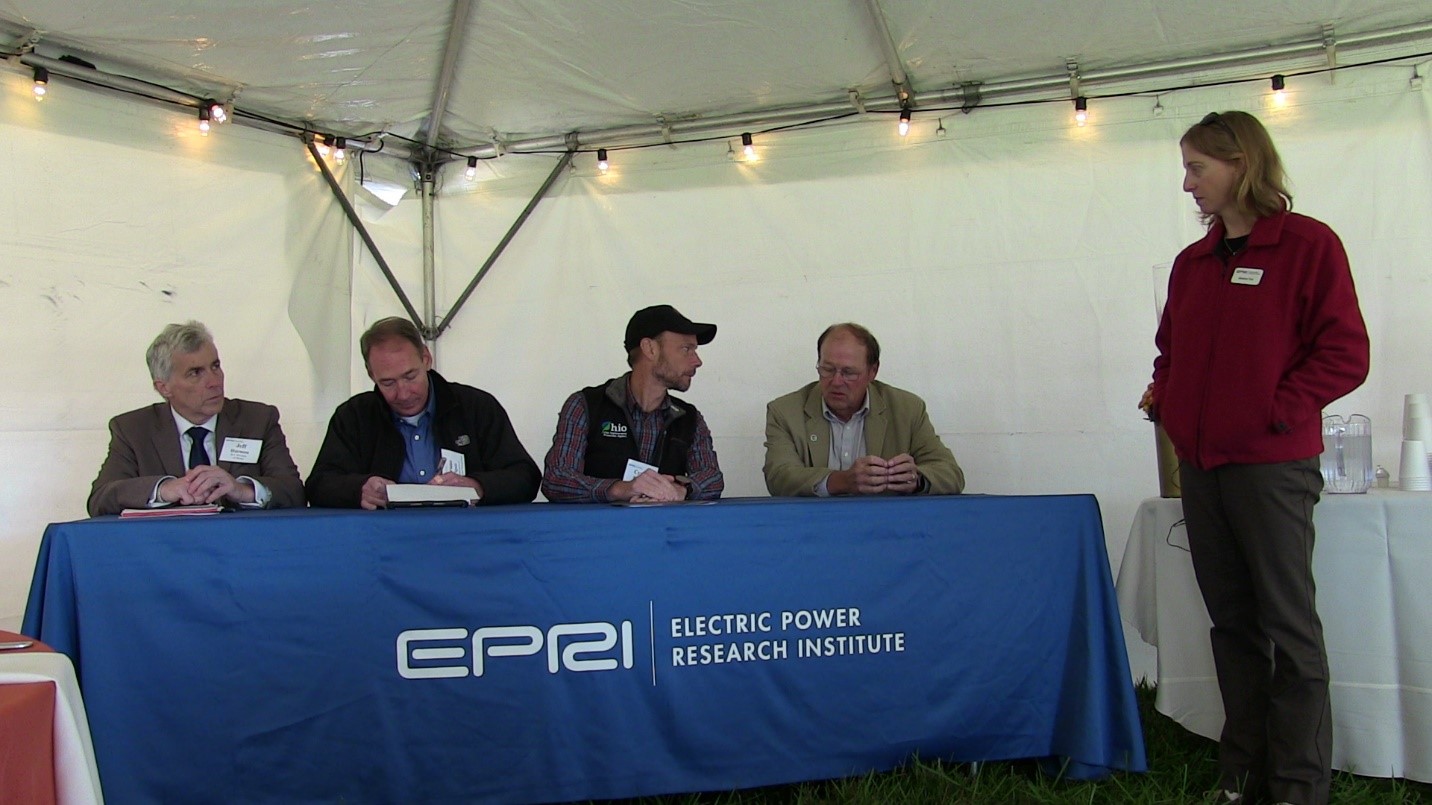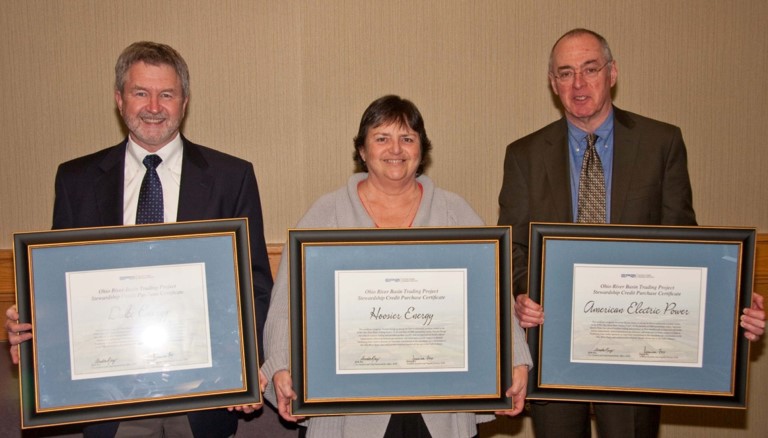Overview
Project Contact
EPRI supports a collaborative process for the development of this project. To this end, we invite feedback, questions, and suggestions on a rolling basis. Please feel free to send us input via e-mail.
For Technical or Stakeholder Questions or to be added to the project contact list: ohiorivertrading@epri.com
For media inquiries:
Chris Mahoney
CMahoney@epri.com.

Water quality trading is an innovative market-based approach to achieving water quality goals for nutrients such as phosphorus and nitrogen through programs that allow permitted emitters to purchase nutrient reductions from another source. Control costs for any one nutrient can differ from one emitter to another, and water quality trading provides an option for meeting discharge requirements in a cost-effective manner.
Since 2007, the Electric Power Research Institute and a strong collaboration of power companies, wastewater utilities, farmers, state and federal agencies and environmental interests have been working to develop a regional interstate water quality trading framework in the Ohio River Basin. As environmental impacts come from many sources, our project is facilitating broad non-traditional collaborations to achieve a common goal of protecting and improving watersheds at lower overall costs. Properly designed and deployed, the proposed trading program in the Ohio River Basin will allow exchanges of water quality credits for nitrogen and phosphorus.
In August 2012, Ohio, Indiana and Kentucky signed the trading plan making it now the world’s largest water quality trading program. The program has the potential to move millions of private dollars into the farm economy by paying farmers for reducing nutrient loading. Utilizing solid scientific foundations, this project could result in a multi-industry market that will accelerate cost-effective water quality improvements and provide important ancillary ecological benefits. Following years of establishing strong project foundations, the project team executed pilot trades for stewardship credits in 2014 and for a research project in 2015. A recent amendment to the plan extended the pilot period through 2020.
-
Read the Program Summary
 (902 KB)
(902 KB) - Watch our Project Video

- View our Infographic
 (1.2 MB)
(1.2 MB) -
Frequently Asked Questions
 (488 KB)
(488 KB)
EPRI's Jessica Fox and Jeff Thomas lead this effort in collaboration with power companies, federal and state agencies, agricultural organizations, academia, the private sector and other industry organizations.
Project Approach
Impacts on water quality in the Ohio River Basin come from many sources including power plants, wastewater treatment plants, urban stormwater, agriculture, and even from sources outside of the Basin. Due to the many sources of impacts and high nutrient loading in some Basin areas, improving water quality will require collaboration among national and state agencies, power plants, wastewater treatment plants, farmers, environmental groups, and others. In addition, coordinated efforts among state, regional and federal regulatory agencies are critical to address how interstate trading will occur.
Decisions regarding program design, timing, and rules will be made with input from stakeholders (see Advisory Committees page). The design of the program will also need to consider existing state trading rules and policies and existing watershed trading programs.
Trading Plan
The nation's first interstate trading plan was signed by Ohio, Indiana, and Kentucky on August 9th, 2012 and amended in October 2013 and again in October 2017. Download the signed, amended Pilot Trading Plan 1.0 for the Ohio River Basin Water Quality Trading Project, ![]() (7.2 MB), which describes the rules and
approach for the pilot period.
(7.2 MB), which describes the rules and
approach for the pilot period.
- Amendment #1
 (2.6 MB) fully executed – October 2013
(2.6 MB) fully executed – October 2013
- Included incentives for stewardship credits
- Required modeling to take into account farm specific variables
- Approved use of Ohio Department of Natural Resources’ Load Reduction Spreadsheet V2.2
- Supported use of stewardship credits as supplemental environmental projects
- Amendment #2
 (1.9 MB) fully executed – October 26th, 2017
(1.9 MB) fully executed – October 26th, 2017
- Extended pilot period through 2020
- Allowed for and encouraged:
- use of the best available models for estimating edge-of-field nutrient reductions
- revisions to annual verification practices as needed
- revisions as necessary to make the credit generation process more efficient for all participants
- Amendment #2 Video


Indiana, Kentucky, and Ohio re-affirm commitment to the project on October 26th, 2017, planting a tree together and signing the 2nd amendment to the trading plan. Pictured from left to right are: Tara Wesseler-Henry, Indiana State Department of Agriculture; David T. Daniels, Director, Ohio Department of Agriculture; Craig Butler, Director, Ohio Environmental Protection Agency; Bruno Pigott, Commissioner, Indiana Department of Environmental Management

Signing of the 2nd amendment on October 26th, 2017 by Indiana, Kentucky, and Ohio.
Pilot Trading
EPRI executed a series of pilot trades in March of 2014 to test the project, representing the first interstate credit transactions for water nutrients in the United States. Duke Energy, Hoosier Energy, and American Electric Power became the first buyers in the program. Collectively, the companies purchased 9000 stewardship credits, agreeing to retire the associated nutrient and ecosystem benefits rather than apply them towards possible future permit requirements.
In 2015, an additional 229 credits were sold to the University of Connecticut. Professor Stephen Swallow and graduate students are conducting environmental economics research which has demonstrated that ecosystem service co-benefits increase the value individuals would be willing to pay for credits by about 34%. These co-benefits include creating wildlife and pollinator habitat, enhancing farm livestock welfare, and carbon sequestration.
The credit sales to UConn in 2015 represent the most recent credit sales in the program as of May 2018.




